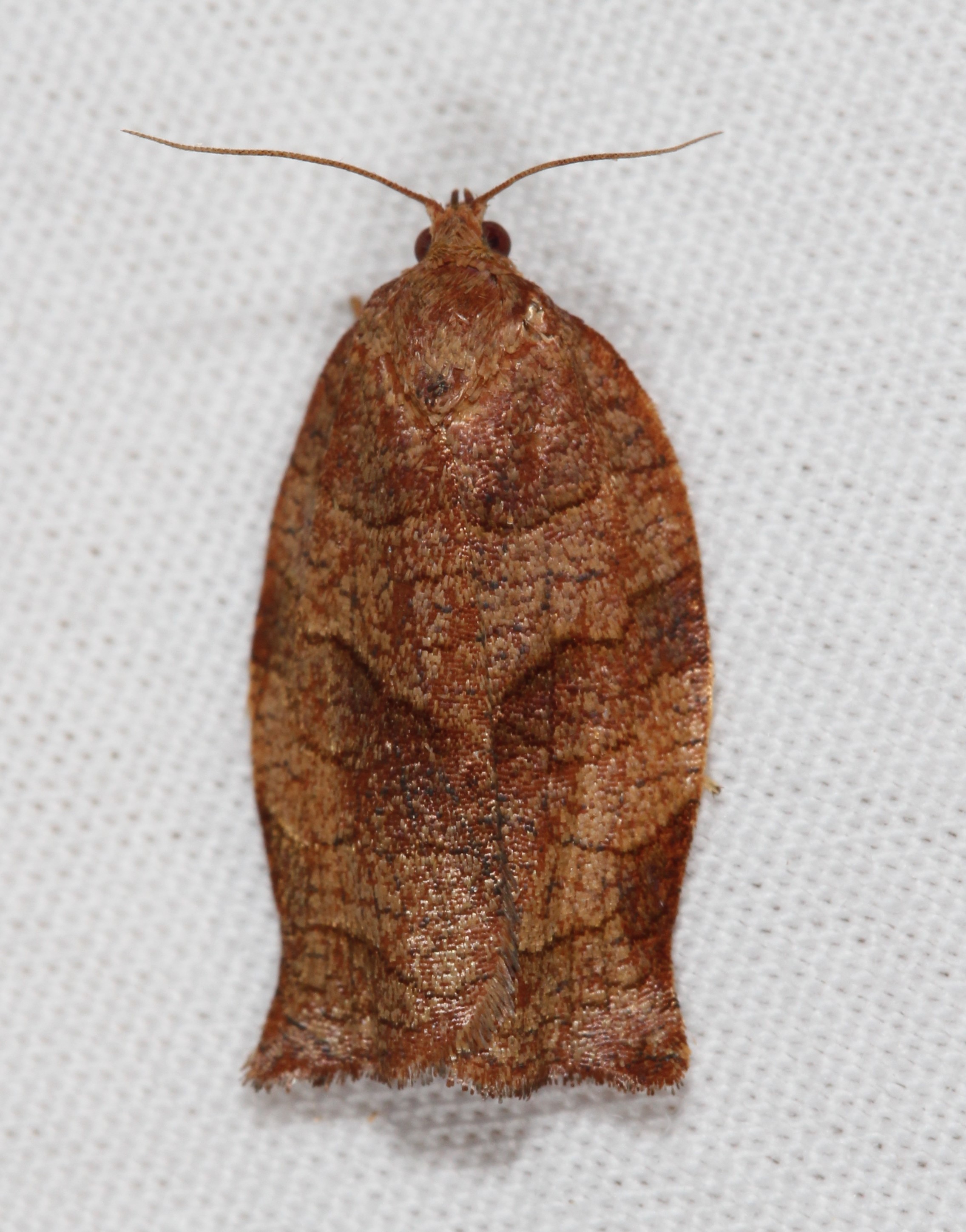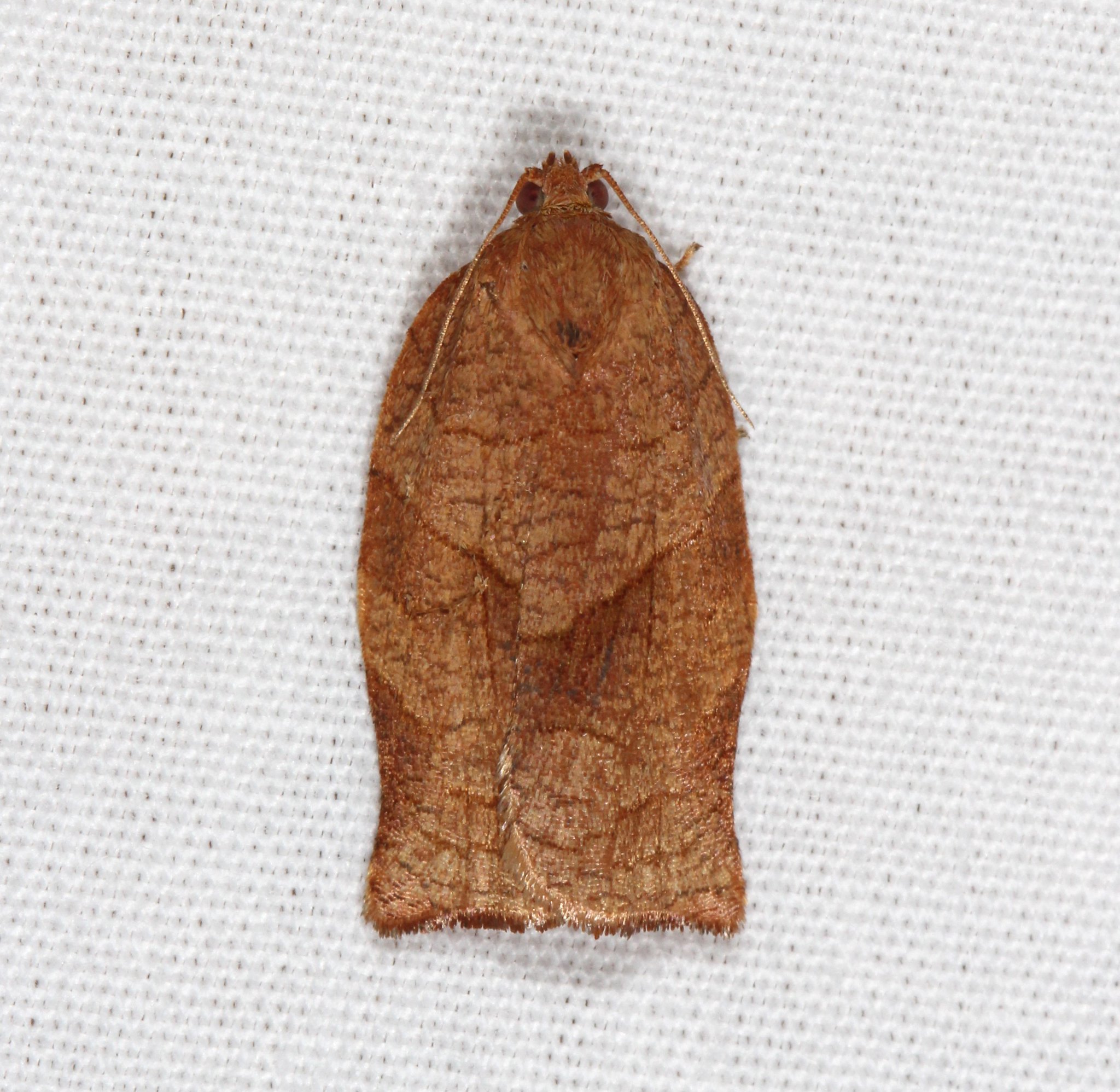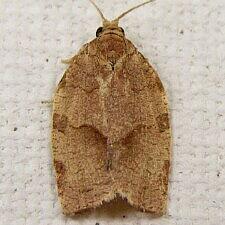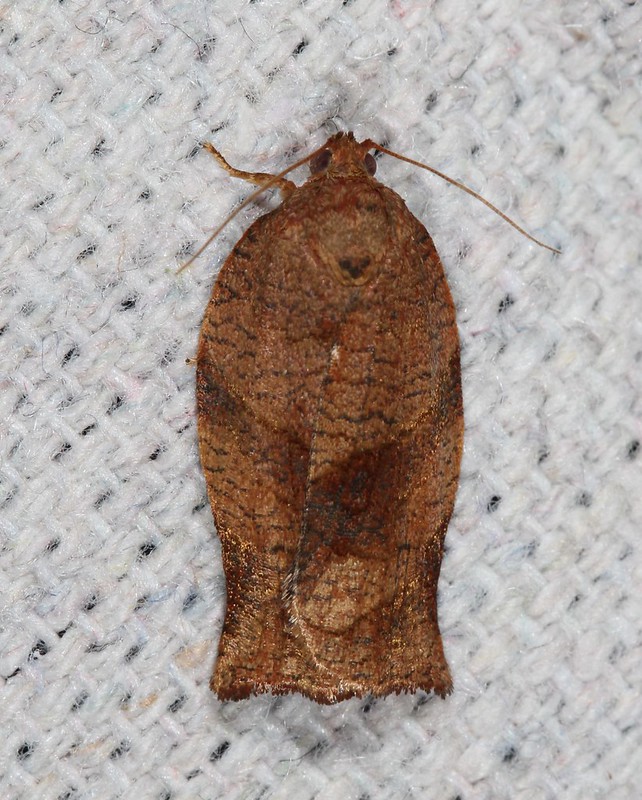Map Snapshot
























577 Records
Status
Common eastern U.S. species that flies from late April to October.
Relationships
Host plants include White Oak and American Basswood (Database of the World's Lepidopteran Hostplants).
Seasonality Snapshot
Source: Wikipedia
| Choristoneura rosaceana | |
|---|---|

| |
| Scientific classification | |
| Domain: | Eukaryota |
| Kingdom: | Animalia |
| Phylum: | Arthropoda |
| Class: | Insecta |
| Order: | Lepidoptera |
| Family: | Tortricidae |
| Genus: | Choristoneura |
| Species: | C. rosaceana
|
| Binomial name | |
| Choristoneura rosaceana (Harris, 1841)[1]
| |
| Synonyms | |
| |
Choristoneura rosaceana, the oblique banded leaf roller or rosaceous leaf roller, is a moth of the family Tortricidae. It is native to North America, but has been accidentally introduced into other parts of the world.
The wingspan is about 25 mm.[2] The forewing length is 7.5–11 mm for males and 11.5–14 mm for females.[3] Adults are on wing from June to July and again from August to September in most of its range.
Description
[edit]The caterpillar is green with a black head. The adult is a small, light brown moth.
Symptoms and signs
[edit]The presence of the species is suggested by rolled, tied and chewed leaves and minor feeding damage on fruits. Damage can be extensive on rosaceous plants.
Host plants
[edit]

Recorded host plants are:
- Acer
- Aesculus
- Betula
- Cirsium
- Crataegus
- Corylus
- Cornus
- Cotoneaster
- Dianthus (carnation)
- Fragaria (strawberry)
- Fraxinus
- Lonicera
- Malus
- Picea
- Pinus
- Platanus
- Populus
- Prunus
- Pyracantha
- Quercus
- Rhododendron (rhododendron, azalea)
- Rosa
- Rubus
- Salix
- Sorbus
- Spirea
- Syringa (lilac)
- Tilia
- Tsuga
- Vaccinium
- Verbena
- Viburnum
References
[edit]- ^ tortricidae.com
- ^ "Species Details - Choristoneura rosaceana, University of Alberta E.H. Strickland Entomological Museum." University of Alberta Museums Search Site, https://search.museums.ualberta.ca/g/2-5273/9-48386. Accessed 12 Jan. 2025.
- ^ Gilligan, T. M. & M. E. Epstein. 2012. TortAI, Tortricids of Agricultural Importance to the United States (Lepidoptera: Tortricidae). Identification Technology Program (ITP), USDA/APHIS/PPQ/CPHST, Fort Collins, CO. [accessed at http://idtools.org/id/leps/tortai/].
- Ontario Ministry of Agriculture, Food, and Rural Affairs
- W.T. Johnson & H.H. Lyon; et al. (1978). Insects That Feed on Trees and Shrubs (Fifth ed.). John Wiley & Sons, New York. pp. 216–217.



























